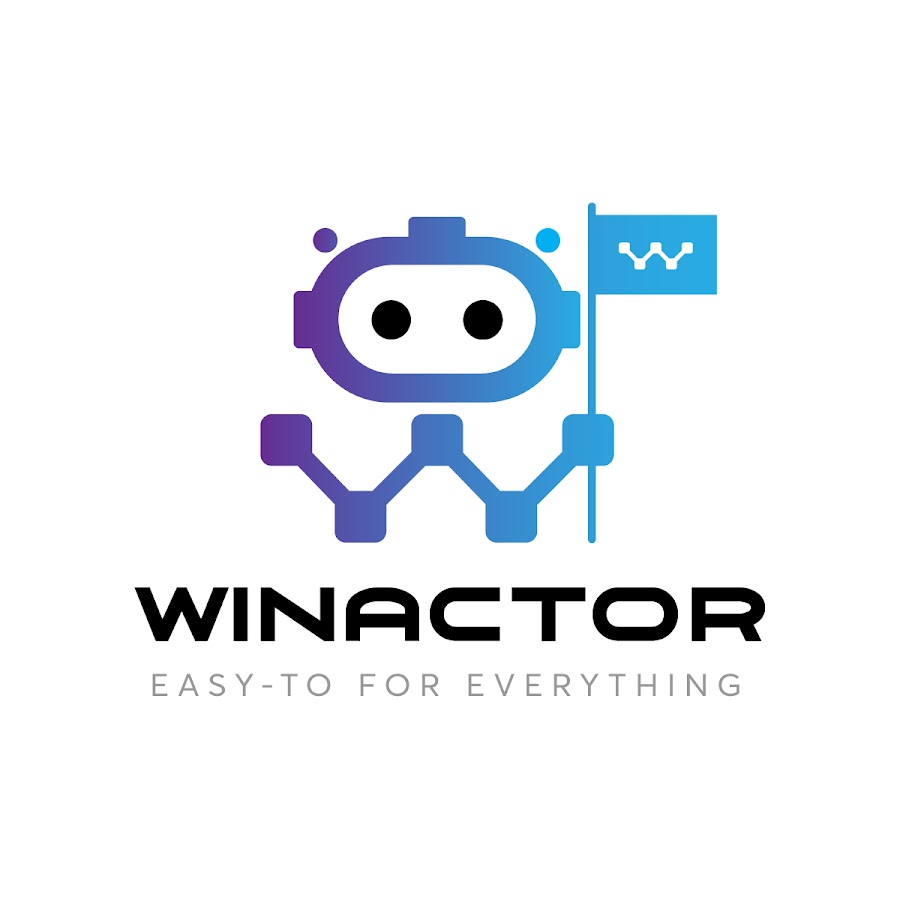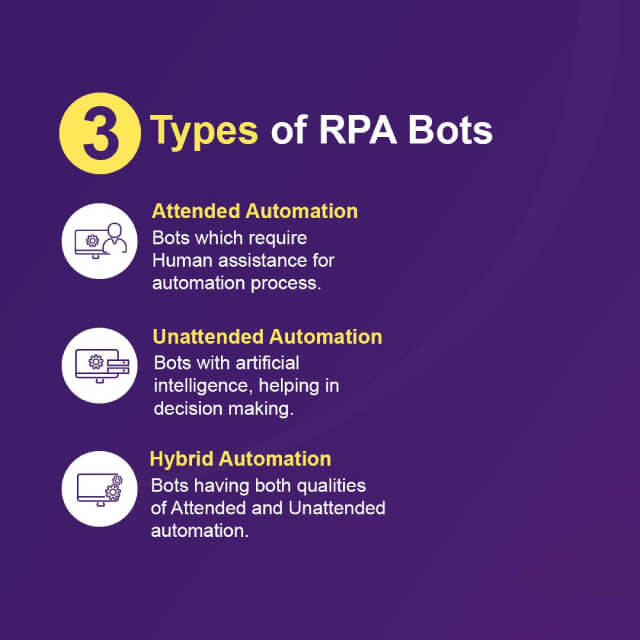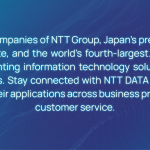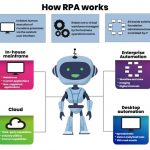Is your business implementing robotic process automation? If so, can you distinguish the mission and capabilities of each RPA bot? Currently, many people are not able to classify RPA. They do not understand deeply about RPA but only understand the central concept and function of this type of technology.
So how to distinguish Robotic Process Automation bots: Attended, unattended and hybrid? The following article from WinActor Support will help you answer this question.
RPA Bots Type
1. Attended RPA Systems
Attended RPA is a software robot that completes non-automated end-to-end processes with the help of agents. The business will need to run the software for the automation robot to work.
For example, Call Centers can leverage RPA to automatically answer calls and get information about that customer from various business applications: CRM, SAP,…
Nowadays, Attended RPA will help businesses handle many different blocks of tasks: business processes or facilitate decision making and boost productivity. However, this technology also has some disadvantages that companies need to be aware of.
One of the most significant limitations of Attended is that it needs to be on employees’ servers. Therefore, it is only capable of executing on a fixed server, and employees cannot simultaneously use the software at the same time.
In addition, attending RPA also has another disadvantage that prevents the computer from being used while it is running. Then, kernels will not perform any other tasks while the RPA is running. This limitation can cause employees to wait for hours during RPA’s performance.
2. Unattended RPA Systems
If Attended Bot does not have terminal automation capabilities, Unattended Bot can perform efficient terminal tasks.
This software is programmed to integrate directly with the computer system to run a specific process or task. The highlight of Unattended RPA is that it does not require any particular program during the activation process.
As a result, employees won’t need to program the RPA bots to work, and they won’t need to monitor it as often. Therefore, enterprises can easily switch to other tasks after implementing RPA for a specific job.
One of the best examples of an unattended software robot system is an automated invoice processing system. If a business finance department needs to automate the processing of received invoices, they can leverage Unattended RPA to do the job.
The most significant advantage of Unattended robotic process automation is that it won’t prevent employees from working on their computers. They can work concurrently with RPA bots without any interruption. For tasks like invoice processing and data entry that take a long time, choosing an RPA system is a good solution.
However, these duties may involve employee confirmation requirements as unattended robotic process automation will work automatically until it completes the task. Employees will not need to be involved in the process.
3. Hybrid RPA Systems
Hybrid RPA Systems is a combination of Attended RPA and Unattended RPA. Therefore, it possesses most of the outstanding features of both types.
Specifically, you can choose to use Hybrid RPA Systems as one of the other two types. It can work flexibly and efficiently on the same or a large server. In addition, businesses will not need to use employees to conduct monitoring and process installation for Hybrid RPA Systems. This bot system is capable of automating most tasks without human intervention.
The Future Of Software Robot Technology
The development of RPA has contributed to creating a new technology trend for businesses. When they realize the importance of using software technologies in the production process, they can effectively improve labor productivity with manufacturing enterprises.
For banking businesses, RPA helps them enhance the quality of service. From there, it can be that robotic process automation has become a practical assistant to all companies when almost every repetitive task can be automated with RPA robots.
At present, Robotic Process Automation is the most powerful enterprise software globally. It has gradually replaced most of the employees in the desk job.
The effectiveness of RPA can be seen through the efficiency and quality of the work it does when a large amount of complex data is processed by the software robot accurately and quickly. Businesses can take advantage of RPA reports building effective strategies in the future.
All that RPA is showing off to demonstrate how unique this technology can be for business workflows. With the ambition to become the most powerful automation robot globally, solution providers have constantly created new features for RPA bots.
Since then, this technology has become more innovative and more efficient, contributing to meeting all the needs of businesses.
In the future, robotic process automation will undoubtedly have more new features, and it will dominate the automation map of the world. From there, the software robot will automate most of the tasks in the workflow.
Employees will face the possibility of losing their desk jobs. They will have to continuously improve their knowledge, move on to tasks that require creativity, and bring more value to the business.
Conclusion
Hopefully, through WinActor Support’s article, it will help you overview the systematic classification of effective RPA bots. The robotic automation system currently includes 3 different categories: Attended, Unattended, and Hybrid.
To increase flexibility, businesses can use Hybrid RPA because these bots can potentially become Attended Bots or Unattended Bots during operation. It possesses all the advantages of both types. RPA will certainly continue to grow and expand with new features in the future. It aims to be the most versatile business automation software in the world.
If you have any other questions, don’t hesitate to leave a comment below for a timely response.
Don’t forget to share this article with colleagues or friends who may be interested in software robots!

WinActor is an RPA software solution by NTT DATA Corporation to help businesses master technology, create breakthroughs in the digital age 4.0.





